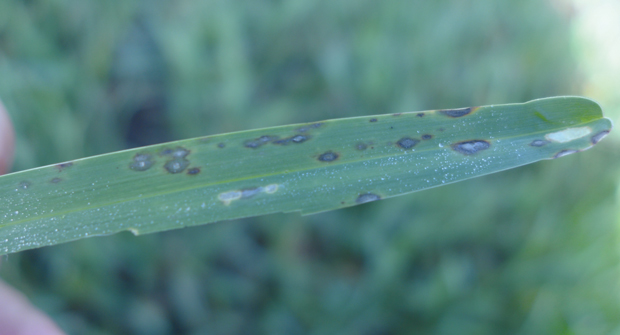Unfortunately for the landscaping industry, as the season starts cooling down, certain turf problems can heat up. Gray leaf spot, caused by the Pyricularia grisea fungus, is a disease that affects mostly annual and perennial ryegrass, tall fescue, St. Augustinegrass and a few other susceptible turfgrasses.
The disease can sprout up nearly wherever susceptible turfgrasses are grown, but Craig Zeigler, president and owner of Agronomic Lawn Management, says it can be most often found in the central transition zones of the U.S., such as North Carolina or Virginia, where he lives.
Sporadic start
Gray leaf spot is dangerous for lawns and landscapes because of the large portion of the year where it can be a threat, especially for warmer climates. The disease can start and spread as early as the beginning of summer, and Zeigler says damage can start appearing even in the fall months of September and October.
Temperature, humidity and moisture are key factors for disease susceptibility in turf, and Zeigler says warm evening or night temperatures with newly seeded grass can sometimes be a recipe for disaster.
“If you’re overseeding, which a lot of people overseed tall fescue, one of the big things you need to keep an eye on are the evening temperatures,” Zeigler says. “When we get in a weather pattern where evening temperatures are 70, 75 degrees F at night, that’s when the red flag comes out.”
And while the disease can become less damaging as the turf matures, that doesn’t make it any less dangerous when it appears. As a fungal disease caused through warm temperatures and extended periods of leaf wetness, Zeigler says it can produce enormous amounts of spores, making it extremely easy for the disease to spread via the wind, rain and even through mowing and other equipment usage.
Spot the problem
Like many other turf pests, identification is key, as the issue can often be mistaken for other common problems like brown patch disease or Pythium blight.
“Look for splotches on the actual leaf blade itself. It almost looks like a cigarette butt — it’s touching the leaf blade of the plant,” Zeigler says. “That’s the initial signs of it, and it’s like an outer smoke ring, is the way it’s described.”
Due to the large amounts of spores it can produce, Zeigler recommends getting aggressive with gray leaf spot once it’s identified. Plus, he says monitoring temperatures and how often watering happens is a great way to be proactive before damage starts.
“As it gets more severe and the plant starts to die, the dead plant kind of has a hook at the end of the leaf blade,” Zeigler says. “It kind of hooks over, where a lot of people will get it confused with Pythium blight.”
Fungal fighters
For Zeigler, one of the best ways to prevent gray leaf spot is through proper turf care. Practices such as not seeding too early, avoiding excessive irrigation, removing wet grass clippings and watering earlier in the day can all create an environment that is difficult for gray leaf spot to handle.
However, if the disease does root itself onto host grass, Zeigler says his recommended way to deal with it is thiophanate-methyl (T-meth).
“T-meth is the best. We do a mixture of azoxystrobin, or ‘strobe,’ and T-meth,” he says. “Especially if the disease is prevalent.”
And, as you might expect, Zeigler’s biggest tip when you see gray leaf spot is to back off on the watering to slow the germination process.


